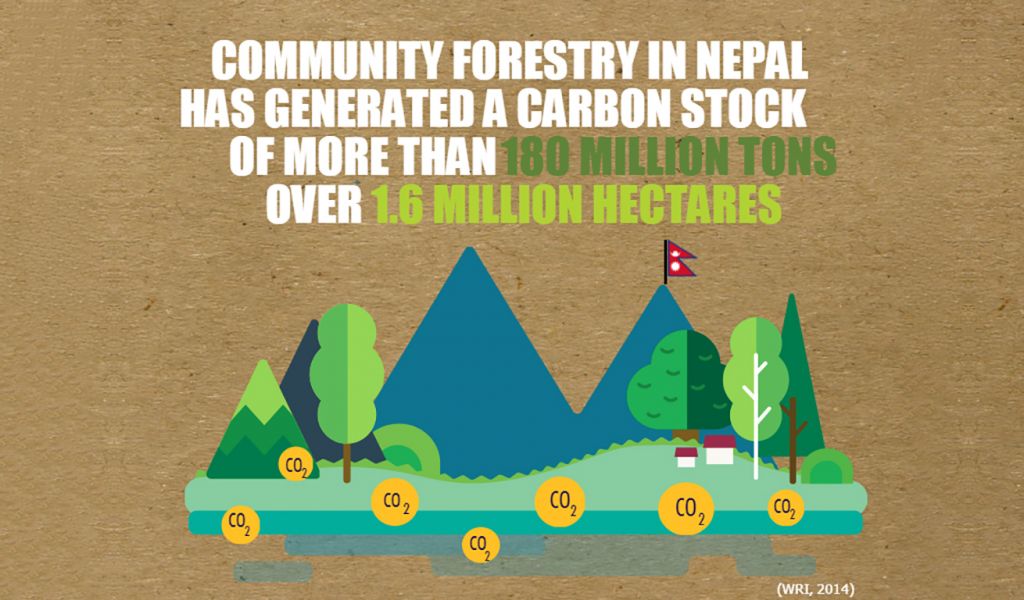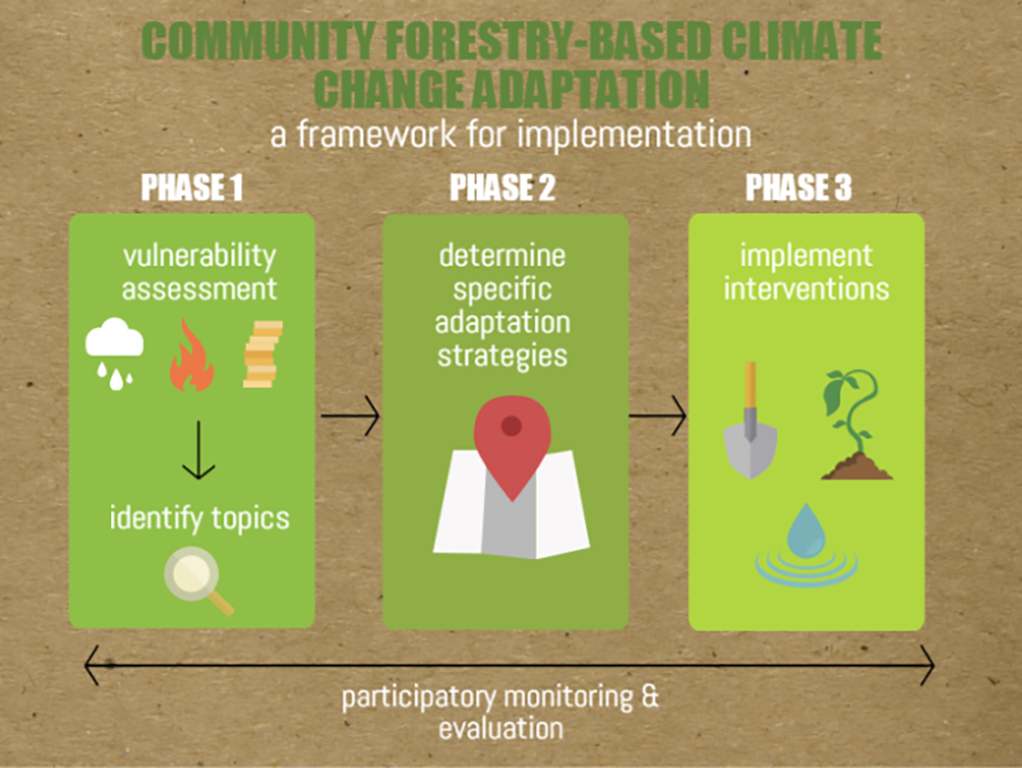Community forestry and joint mitigation and adaptation: bridging old and new with a tool from Nepal

Until quite recently, climate change observers were concerned with the potential tradeoffs between mitigation and adaptation. They were often wary that discussions on adaptation would derail mitigation efforts. However, given the growing urgency of the climate change problem this discourse has changed. Now, more than ever, adaptation is gaining traction in global climate change discussions. In the recently established Paris Agreement, adaptation is understood as on par with mitigation.
The two responses to climate change – mitigation and adaptation – have been understood in distinct silos. Mitigation, one the one hand, has referred to efforts to limit the amount of greenhouse gases in th (3)In addition, a growing emphasis is being placed on breaking down the silos that divide mitigation and adaptation and finding synergies between the two. This is perhaps clearest in Article 5 of the Paris Agreement, which promotes the concept of Joint Mitigation and Adaptation (JMA). JMA advocates for the integral and sustainable management of forests to simultaneously sequester carbon and adapt to climate impacts.
However, for many with experience in community forestry in Nepal, the concept of JMA doesn't sound so new. It could be argued that JMA has been practiced for quite some time across the country’s 18,900 formally recognized Community Forestry User Groups (CFUG). In fact, research shows that community forestry in Nepal has already generated a carbon stock of more than 180 million tons over 1.6 million hectares (WRI, 2014). And given that about one third of the country’s total population has been directly affected by the institution of community forestry(Ojha et al. 2009), it is safe to say that it has played a strong role in influencing local adaptive capacity.
So, to facilitate JMA in the context of community forestry in Nepal, we don't need to reinvent the wheel. Rather, we need to provide simple tools that build on the resources embedded within existing institutions and ensure that benefits accrue to most marginalized populations. To realize that goal, RECOFTC has developed a framework that enables CFUG members to lead initiatives that address both climate and non-climate vulnerabilities in the context of integrated forested landscapes.
Known as the community forestry-based climate change adaptation (CF-CCA) framework, this three-part guide enables practitioners to assess local climate vulnerability, evaluate potential climate change adaptation interventions, and implement adaptation projects. It provides tools to consider the ways in which climate change impacts interact across sectors, and it places the poor, disadvantaged ethnic and caste groups, and women at the center of all of its activities.

RECOFTC’s most recent practitioner’s brief walks through the CF-CCA framework, and provides detailed explanations in order to facilitate its implementation on the ground. In addition, we provide important insights into how the framework was developed in Nepal, and best practices and lessons learned from the piloting process.
We believe that this framework can contribute to JMA both within and outside of Nepal, given its emphasis on sustainable forest management, maintaining ecosystem services, and building adaptive capacity. But, for that to be possible, communities must have strong rights to their forests and a voice in deliberative and democratic climate change decision-making processes.
For more information on RECOFTC’s community forestry-based climate change adaptation framework, click here:http://www.recoftc.org/brief/community-forestry-based-climate-change-adaptation-practitioner%E2%80%99s-brief
For more information on the Paris Agreement, click here: http://www.recoftc.org/q-and-booklet/forests-and-climate-change-after-paris-asia-pacific-perspective
For more information on RECOFTC’s recent training on JMA, click here: http://www.recoftc.org/sites/default/files/uploaded_files/RECOFTC_JMA_workshop.pdf
Citations:
Stevens, C., R. Winterbottom, J. Springer, and K. Reytar. 2014. Securing Rights, Combating Climate Change: How Strengthening Community Forest Rights Mitigates Climate Change. Washington, DC: World Resources Institute. Accessible at www.wri.org/securing-rights.
Ojha, H., L. Persha, A. Chhatre. 2009. Community Forestry in Nepal: A Policy Innovation for Local Livelihoods. Washington, DC: International Food Policy Research Institute.

